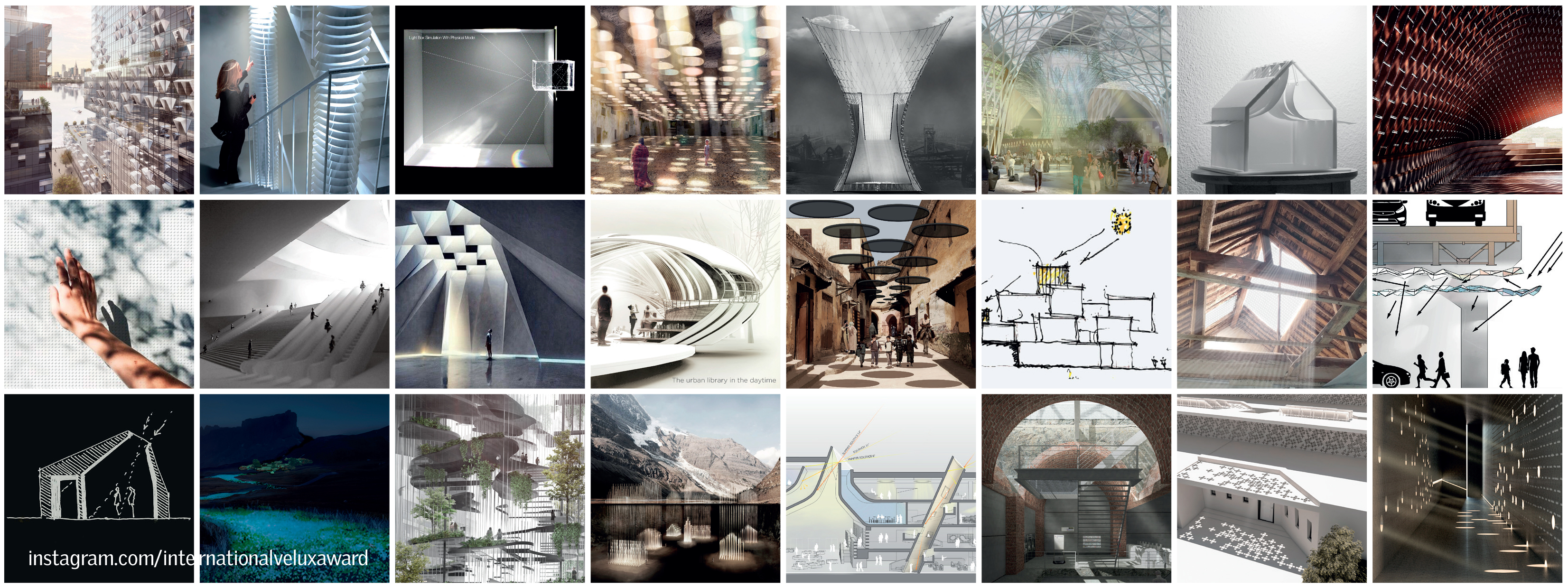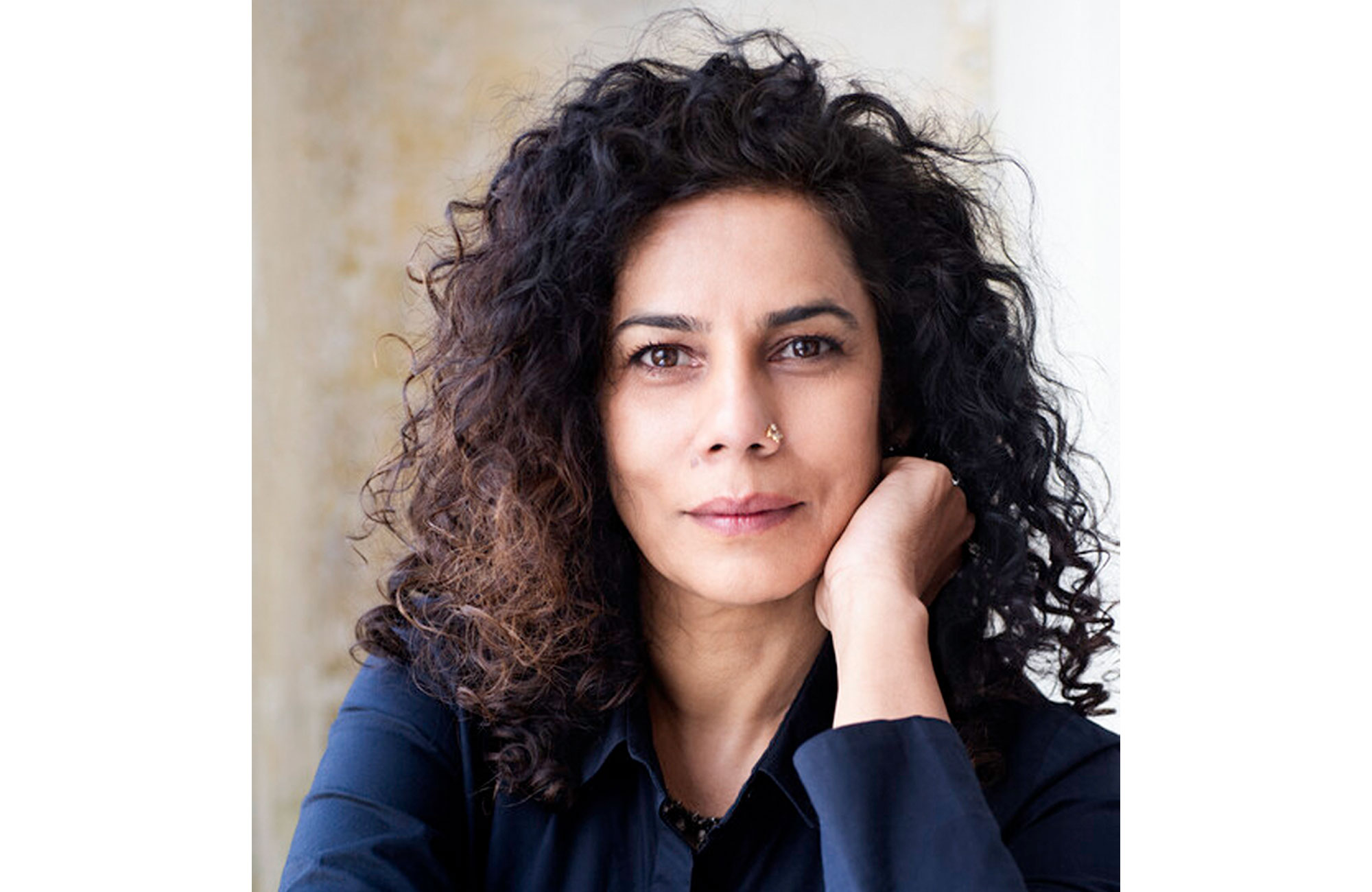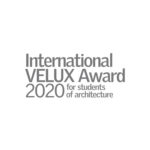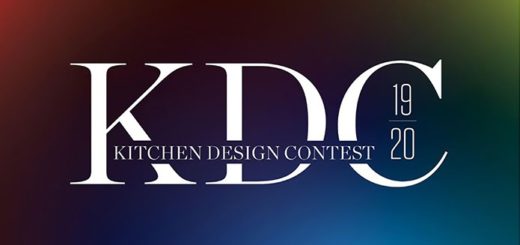2022 International VELUX Award
International VELUX Award 2022 for students of architecture is open for registrations!

The International VELUX Awardis a competition for students of architecture, which runs every second year. In 2022 the competition celebrates the 10thedition!
Students of architecture from around the world are invited to register their participation and join the community of more than 5000 students who have participated so far.
Here on the website you can find rich library of filmed lectures, daylight talks, and articles created by architects, journalist and researchers. These are valuable resources while working on your projects; for finding the inspiration and for expanding the understanding of the importance of daylight for the life on Earth.
Register now with your name and email, and then gather your team, connect with your teacher and start working on your daylight projects. The submission period opens 15 April 2022!
Award Brief
Scope
Daylight in architecture is an ever-relevant topic. Daylight has been used for centuries as the primary source of light for the interior and architects have always been interested in and fascinated by daylight; yet daylighting can be a difficult discipline to approach, understand and master.
Daylighting describes the controlled use of natural light in and around buildings. It is the practice of placing windows, or other transparent media and reflective surfaces, so that natural light provides effective internal illumination during the day. Successful daylighting requires design considerations at all stages of the building design process, from site planning to architectural, interior and lighting design.
Today buildings are major energy consumers; strategies for reducing energy use and carbon emissions are therefore called for, such as using sunlight as a source of energy and light. Much focus on sustainable buildings has been on energy aspects. However, health is the most precious resource we have, and energy is only one aspect of sustainability. A primary goal for sustainability should be to sustain human life on Earth.
A good indoor climate, with generous daylight levels and provision of fresh air from outside, is the key to making homes, offices, kindergartens and schools healthy places to live and work in. We spend an excessive amount of time inside buildings – and the air that we breathe and the amount of daylight we are exposed to have a great impact on our health and well-being and thereby the quality of our lives. Therefore, we need to consider the right daylighting strategies and solutions for our buildings.
The award
The International VELUX Award 2022 for Students of Architecture wants to encourage and challenge students of architecture to explore the theme of daylight – and to create a deeper understanding of this specific and ever-relevant source of energy, light and life.
The award celebrates and promotes excellence in completed study works. These works can be made as works complying with the prize scope of rethinking the values of conscious daylighting design with focus on people’s health in living and working environments.
The award encourages projects that celebrate the privilege of being a student; with curiosity and with the willingness to think “out of the box” – as well as consider the social, sociological and environmental dimension of light.
The award wants to acknowledge not only the students but their teachers as well. Therefore, teachers of the projects are also awarded.
Theme
“Light of Tomorrow” is the overall theme of the International VELUX Award. The award seeks to challenge the future of daylight in the built environment with an open-minded and experimental approach. Therefore, the award seeks to widen the boundaries of daylight in architecture, including aesthetics, functionality, sustainability, and the interaction between buildings and environment.
1. Daylight in buildings
Projects that demonstrate applicable principles for providing daylight and sunlight into buildings – including the effects of building construction and context of the site, shape and dimensions, window openings, screens, shadings, interior divisions, materials and external conditions.
Specific focus on architecture for health and well-being and projects that address challenges faced by cities, communities and modern societies, and where daylight and architecture can help create change through better and healthier living environments.
2. Daylight investigations
Projects that look at the physical properties of light, basics of optics and materials, as well as technological developments, new materials, storage or transportation of daylight.
The use of daylight in public space for functional, recreational, cultural or spiritual use and the effect of daylight on state of mind, health and well-being as well as the dynamics and temporal quality of daylight and its effects on behaviour and spaces over time and seasons.
Type of award and categories
The award is an open ideas competition and it is organised globally in two phases: in the first phase, regional prizes will be awarded to projects from the UIA member regions 1) Western Europe, 2) Eastern Europe and the Middle East, 3) the Americas, 4) Asia+ Oceania and 5) Africa. In the second phase, prizes will be awarded to overall winners.
The award is not restricted to the use of VELUX products. Innovative thinking and use of specific VELUX components as daylight providers will however be within the scope of the award and the jury will be allowed to give special prizes to the best projects.
Criteria
The jury will evaluate the projects in accordance with the following criteria:
- The work with daylighting as a premise for architecture
- How the project is researched and documented
- How the project addresses contemporary and future challenges
- The level of experimentation and innovation
- The overall graphic presentation of the project, how the project presents itself.
The jury
All award entries are reviewed by an international jury and their election of the winners is based on the above criteria.
Who can participate?
The award is open to any registered student of architecture – individual or team – all over the world. We encourage multi-disciplinary teams including e.g. engineering, design and landscaping. Every student or student team must be backed and granted submission by a teacher from a school of architecture.
The award welcomes projects from individuals or groups of students, who are students during the study year 2021/22.
There is no limit to the number of entries from each school, but participating schools should ensure the quality of submitted study projects, e.g. by making a prejudgment. VELUX employees cannot participate.
Schedule
| 1 September 2021 | Registration opens |
| 01 April 2022 | Registration closes |
| 15 April 2022 | Submission period opens; deadline for questions |
| 15 June 2022 | Submission deadline; project upload |
| July 2022 | Jury meeting – evaluation of all submitted projects |
| December 2022 | Winners announcement at the World Architecture Festival |
Registration
Only students who have registered for the award before 01 April 2022 can participate.
Anonymity
To ensure anonymity, no names of entrants, teachers, schools or countries are allowed on any part of the submitted material. The registration and submission system of the International VELUX Award has been constructed to ensure anonymity of the participants throughout the process from registration to after the jury meeting.
The award, presented every second year since 2004, is organised in co-operation with UIA, International Union of Architects, and the competition concept is based on UIA rules for international competitions.
Submission
You can submit your project on iva.velux.com using the IVA account that you create when you register.
Your project can only be delivered digitally and only by the person who has registered.
The jury evaluation is performed online and you should take into account that your project should present itself digitally.
You need to submit:
- One image file, which depicts your project
- A description of your project, no longer than 800 words, in English
Image specifications
| File format | JPEG |
| File extension | .jpg |
| JPEG quality | Maximum |
| JPEG format options | Baseline (“Standard”) |
| Colour space | RGB (Preferred destination/mode Adobe RBG 1998) |
| Colour depth | 8 bit (per channel, three channels) |
| Aspect ratio | 16:9 |
| Pixel aspect ratio | 1:1 (Square) |
| Effective resolution | 300 ppi (pixels per inch) |
| Maximum file size | 150 MB |
| Dimensions | 9600 pixels wide x 5400 pixels high (32 x 18 inch in 300 ppi) |
| Layout | Landscape |
| Layers | None |
| Alpha channels | None |
| Clipping paths | None |
Prizes
The total prize money is up to 30,000 €. Depending on the results of the international jury, a Grand Prize of 5,000 € per category will be awarded (4,000 € to the student and 1,000 € to the teacher) for the most outstanding projects. Depending on the results for each region, a prize of 1,250 € per category will be awarded for the best projects (1,000 € to the student and 250 € to the teacher). The jury will be allowed to award a number of special prizes, including prizes for innovative use of VELUX products.
Winners announcement
Winners will be informed directly after the jury meeting in July 2022.
All submitted projects will be displayed at iva.velux.com after the winners announcement.
Further information and questions
Further information, specification and inspiration will be available on iva.velux.com.
Public announcement
Communication on and photos and films of winners, winning projects and honourable mentions will be released to architectural magazines, newspapers, webpages and other relevant media after the winner’ announcement.
By entering the International VELUX Award, the participants accept that the UIA and the organiser – the VELUX Group – may publish and disseminate the submitted projects and photos of the participants in analogue and digital form.
The Jury

Fuensanta Nieto
Nieto Sobejano Arquitectos:https://www.nietosobejano.com/info.aspxCountry:Spain
Fuensanta Nieto is a founding partner of Nieto Sobejano Arquitectos and a professor at the Universidad Europea de Madrid. She has as worked as an architect since graduating from the Universidad Politécnica de Madrid and the Graduate School of Architecture and Planning at Columbia University in New York, in 1983. Fuensanta Nieto lectures on architecture and participates in juries and symposia at various institutions around the world. From 1986 to 1991 she was co-director of the architectural journal Arquitectura, published by the Colegio Oficial de Arquitectos de Madrid.
Nieto Sobejano Arquitectos was founded in 1985 by Fuensanta Nieto and Enrique Sobejano and has offices in Madrid and Berlin. Along with being widely published in international magazines and books, the firm’s work has been exhibited at the Biennale di Venezia in 2000, 2002, 2006, and 2012, at the Museum of Modern Art (MoMA), New York, in 2006, at the Kunsthaus in Graz in 2008 and at the MAST Foundation in Bologna in 2014.
They are the recipients of the 2007 National Prize for Conservation and Restoration of Cultural Heritage and the 2010 Nike Prize issued by the Bund Deutscher Architekten (BDA), as well as the Aga Khan Award for Architecture (2010), the Piranesi Prix de Rome (2011), the European Museum of the Year Award (2012), the Hannes Meyer Prize (2012), AIA Honorary Fellowship (2015), the Alvar Aalto Medal (2015) and Gold Medal of Merit in the Fine Arts in 2017.

John Ronan
John Ronan Architects:http://www.jrarch.com/Country:United States of America
John Ronan FAIA is an American architect and Founding Principal of John Ronan Architects in Chicago. He works as a Lead Designer and is known for his abstract yet sensuous work which explores materiality and atmosphere. John Ronan holds a Master of Architecture degree with distinction from the Harvard University Graduate School of Design and a Bachelor of Science degree from the University of Michigan.
John Ronan’s work has been exhibited internationally and covered extensively by the international design press, including two publications on the firm’s work. He has lectured widely and his writings have appeared in books, architecture journals and Poetry magazine. His firm is the recipient of numerous design awards, including three AIA National Architecture Awards.
In 2017, John Ronan was the recipient of the American Academy of Arts and Letters Architecture Award. He is currently the John and Jeanne Rowe Endowed Chair Professor of Architecture at the Illinois Institute of Technology College of Architecture.

Anupama Kundoo
Anupama Kundoo architects:https://anupamakundoo.com/Country:India
Anupama Kundoo graduated from University of Mumbai in 1989 and received her PhD degree from the TU Berlin in 2008. Her research-oriented practice has generated people centric architecture based on spatial and material research for low environmental impact while being socio-economically beneficial. Her body of works was recently exhibited as a solo show ‘Taking Time’ at Louisiana Museum of Modern Art, Denmark till 16 May 2021. She has taught Architecture and Urban Management at various international universities strengthening her expertise in rapid urbanization and climate change related development issues, and was the Davenport Visiting Professor at Yale University in Spring 2020. She is currently a Professor at Potsdam School of Architecture, Germany.
Anupama Kundoo’s architecture has been recognised and honoured many times, most recently by the RIBA Charles Jencks Award 2021 and the 2021 Auguste Perret Prize for her contribution to architectural technologies. In 2013 she received an honourable mention in the ArcVision International Prize for Women in Architecture for ‘her dedication when approaching the problem of affordability of construction and sustainability in all aspects’.

Rainer Hofmann
Bogevischs Buero:https://www.bogevisch.de/startseiteCountry:Germany
Rainer Hoffman is a German architect, a founding partner of Bogevischs BueroMunich, which he established together with Ritz Ritzer. He was a chairman of the Association of German Architects of Munich upper Bavaria district. In 2018 and 2019 he was a guest professor at TU Munich. In 2010 he held a lectureship at Coburg University. Before starting his own architecture practice, he has worked with Horden Cherry Lee Architects, Brookes Stacey Randall, MacCormac Jamieson Prichard in London UK.
The architecture practice Bogevischs Buero is interested in shape and surfaces and fascinated by the alternative ways of using materials. They emphasise that the backbone of their projects develops in the process, which gradually finds its shape. Being less interested in the new or the fashionable, the architects point out that the new is seldom new for a long time, and that forms are becoming obsolete.
Rainer Hofmann has held a lectureship at Greenwich-School of Architecture, AA-School of Architecture and at Bartlett School of Architecture, London. Rainer holds a master of architecture degree from Iowa State University, US.

Martin Løkke
VELUX:https://www.velux.com/Country:Denmark
Martin Løkke, from Denmark, is Vice President of VELUX Innovation Center. He is responsible for product development and SMART technologies in the VELUX Group. Martin Løkke has held several positions in international companies being responsible for R&D. Martin is part of the investment panel in the Innovation Fund Denmark financing entrepreneurs, researchers and businesses.
Contact
If you have any further questions regarding the award, competition and submission process please send us an email to iva@velux.com.
相關連結:
International VELUX Award相關競賽:
 2022 International VELUX Award2022 International VELUX Award 01 April 2022 Registration closes. which runs every second year. In 2022 the competition celebrates the 10th edition!
2022 International VELUX Award2022 International VELUX Award 01 April 2022 Registration closes. which runs every second year. In 2022 the competition celebrates the 10th edition! VELUX國際建築設計競賽VELUX國際建築設計競賽 世界各地的任何建築系學生 - 個人或團隊開放。 我們鼓勵多學科團隊,例如:工程、設計和 景觀。 每個學生或學生團隊都必須得到建築學院的老師的支持和批准。 該獎項歡迎來自 2019/20學年期間學生的個人或團體的項目。 每所學校的參賽作品數量沒有限制,但參與學 校應確保提交的學習項目的質量,例如 通過預先判斷。 VELUX員工不能參加。
VELUX國際建築設計競賽VELUX國際建築設計競賽 世界各地的任何建築系學生 - 個人或團隊開放。 我們鼓勵多學科團隊,例如:工程、設計和 景觀。 每個學生或學生團隊都必須得到建築學院的老師的支持和批准。 該獎項歡迎來自 2019/20學年期間學生的個人或團體的項目。 每所學校的參賽作品數量沒有限制,但參與學 校應確保提交的學習項目的質量,例如 通過預先判斷。 VELUX員工不能參加。
延伸閱讀:
- 2022 国际威卢克斯(Velux)大奖赛
 「 竞赛要求 」 “明日之光(Light of Tomorrow)”是国际威卢克斯大奖赛的总主题。该竞赛旨在以开放和实验的方式挑战未来建筑环境关于阳光的运用。 该奖项是一个开放的创意竞赛,在全球范围内分两个阶段组织:第一阶段,区域奖项将颁发给来自 UIA 成员地区的项目:西欧,东欧和中东,美洲,亚洲 + 大洋洲和非洲。在第二阶段,向总冠军颁发奖项。 该奖项不仅限于使用威卢克斯产品。然而,创新思维和使用特定的威卢克斯产品作为日光部件将在奖项的考量范围内,评审团将被允许向最佳项目颁发特别奖。 「 竞赛日期 」 报名日期:2021年9月1日—2022年4月1日 提问截止日期:2022年4月15日 成果提交时间:2022年4月15日—6月15日 https://www.daylightandarchitecture.com/iva/
「 竞赛要求 」 “明日之光(Light of Tomorrow)”是国际威卢克斯大奖赛的总主题。该竞赛旨在以开放和实验的方式挑战未来建筑环境关于阳光的运用。 该奖项是一个开放的创意竞赛,在全球范围内分两个阶段组织:第一阶段,区域奖项将颁发给来自 UIA 成员地区的项目:西欧,东欧和中东,美洲,亚洲 + 大洋洲和非洲。在第二阶段,向总冠军颁发奖项。 该奖项不仅限于使用威卢克斯产品。然而,创新思维和使用特定的威卢克斯产品作为日光部件将在奖项的考量范围内,评审团将被允许向最佳项目颁发特别奖。 「 竞赛日期 」 报名日期:2021年9月1日—2022年4月1日 提问截止日期:2022年4月15日 成果提交时间:2022年4月15日—6月15日 https://www.daylightandarchitecture.com/iva/ - 2022 国际威卢克斯(Velux)大奖赛
 「 竞赛介绍 」 国际威卢克斯(Velux)大奖赛是一项针对建筑学学生的竞赛,每两年举办一次。2022年迎来了该竞赛的第10届! 这项竞赛将邀请来自世界各地的建筑学学生注册参与,并加入到迄今为止拥有5000多名学生的参赛群体中。 “明日之光(Light of Tomorrow)”是国际威卢克斯大奖赛的总主题。该竞赛旨在以开放和实验的方式挑战未来建筑环境关于阳光的运用。因此,该竞赛旨在拓宽建筑中阳光的定义,包括美学、功能性、可持续性以及建筑与环境之间的相互作用。主题的诠释包含两个方面: 1.建筑中的光 展示为建筑物提供日光和阳光的适用原则的项目,包括建筑施工和现场环境的影响、形状和尺寸、窗户开口、屏风、阴影、内部分隔、材料和外部条件等等。 重点关注健康和福利建筑以及解决城市、社区和现代社会面临的挑战的项目,以及日光和建筑可以通过更好、更健康的生活环境帮助创造变化的项目。 2.日光研究 研究光的物理性质、光学和材料的基础知识、技术发展、新材料、日光的储存或导引的项目。 将日光用于公共空间的功能、娱乐、文化或精神用途,以及日光对精神状态、健康和福祉的影响,以及日光的动态和时间质量及其随时间和季节对行为和空间的影响。 「 竞赛要求 」 “明日之光(Light of Tomorrow)”是国际威卢克斯大奖赛的总主题。该竞赛旨在以开放和实验的方式挑战未来建筑环境关于阳光的运用。 该奖项是一个开放的创意竞赛,在全球范围内分两个阶段组织:第一阶段,区域奖项将颁发给来自 UIA 成员地区的项目:西欧,东欧和中东,美洲,亚洲 + 大洋洲和非洲。在第二阶段,向总冠军颁发奖项。 该奖项不仅限于使用威卢克斯产品。然而,创新思维和使用特定的威卢克斯产品作为日光部件将在奖项的考量范围内,评审团将被允许向最佳项目颁发特别奖。 「 竞赛日期 」 报名日期:2021年9月1日—2022年4月1日 提问截止日期:2022年4月15日 成果提交时间:2022年4月15日—6月15日 评审日期:2022年7月 获奖公布日期:2022年8月 世界建筑节上的获奖者介绍和公告:2022年12月 「 奖项信息 」 总金额:30000欧元 优秀项目:5000欧元(学生4000欧元,教师1000欧元) 最佳项目:每个类别1250欧元(学生1000欧元,教师250欧元) 特别奖项:创新使用VELUX产品的奖项 该奖项面向世界各地的任何在读建筑学生(个人或团队)开放。竞赛鼓励多学科团队,例如工程、设计和园林景观等。每个学生或学生团队都必须得到建筑学院教师的支持和批准。 该奖项欢迎学生个人或团队参赛,参赛选手必须是在 2021/22 年度在读的学生。每所学校的参赛作品数量没有限制,但参与的学校应确保提交的项目的质量,例如通过预先审评等手段。威卢克斯员工不能参加。 具体竞赛信息以官网为准: https://www.daylightandarchitecture.com/iva/
「 竞赛介绍 」 国际威卢克斯(Velux)大奖赛是一项针对建筑学学生的竞赛,每两年举办一次。2022年迎来了该竞赛的第10届! 这项竞赛将邀请来自世界各地的建筑学学生注册参与,并加入到迄今为止拥有5000多名学生的参赛群体中。 “明日之光(Light of Tomorrow)”是国际威卢克斯大奖赛的总主题。该竞赛旨在以开放和实验的方式挑战未来建筑环境关于阳光的运用。因此,该竞赛旨在拓宽建筑中阳光的定义,包括美学、功能性、可持续性以及建筑与环境之间的相互作用。主题的诠释包含两个方面: 1.建筑中的光 展示为建筑物提供日光和阳光的适用原则的项目,包括建筑施工和现场环境的影响、形状和尺寸、窗户开口、屏风、阴影、内部分隔、材料和外部条件等等。 重点关注健康和福利建筑以及解决城市、社区和现代社会面临的挑战的项目,以及日光和建筑可以通过更好、更健康的生活环境帮助创造变化的项目。 2.日光研究 研究光的物理性质、光学和材料的基础知识、技术发展、新材料、日光的储存或导引的项目。 将日光用于公共空间的功能、娱乐、文化或精神用途,以及日光对精神状态、健康和福祉的影响,以及日光的动态和时间质量及其随时间和季节对行为和空间的影响。 「 竞赛要求 」 “明日之光(Light of Tomorrow)”是国际威卢克斯大奖赛的总主题。该竞赛旨在以开放和实验的方式挑战未来建筑环境关于阳光的运用。 该奖项是一个开放的创意竞赛,在全球范围内分两个阶段组织:第一阶段,区域奖项将颁发给来自 UIA 成员地区的项目:西欧,东欧和中东,美洲,亚洲 + 大洋洲和非洲。在第二阶段,向总冠军颁发奖项。 该奖项不仅限于使用威卢克斯产品。然而,创新思维和使用特定的威卢克斯产品作为日光部件将在奖项的考量范围内,评审团将被允许向最佳项目颁发特别奖。 「 竞赛日期 」 报名日期:2021年9月1日—2022年4月1日 提问截止日期:2022年4月15日 成果提交时间:2022年4月15日—6月15日 评审日期:2022年7月 获奖公布日期:2022年8月 世界建筑节上的获奖者介绍和公告:2022年12月 「 奖项信息 」 总金额:30000欧元 优秀项目:5000欧元(学生4000欧元,教师1000欧元) 最佳项目:每个类别1250欧元(学生1000欧元,教师250欧元) 特别奖项:创新使用VELUX产品的奖项 该奖项面向世界各地的任何在读建筑学生(个人或团队)开放。竞赛鼓励多学科团队,例如工程、设计和园林景观等。每个学生或学生团队都必须得到建筑学院教师的支持和批准。 该奖项欢迎学生个人或团队参赛,参赛选手必须是在 2021/22 年度在读的学生。每所学校的参赛作品数量没有限制,但参与的学校应确保提交的项目的质量,例如通过预先审评等手段。威卢克斯员工不能参加。 具体竞赛信息以官网为准: https://www.daylightandarchitecture.com/iva/


